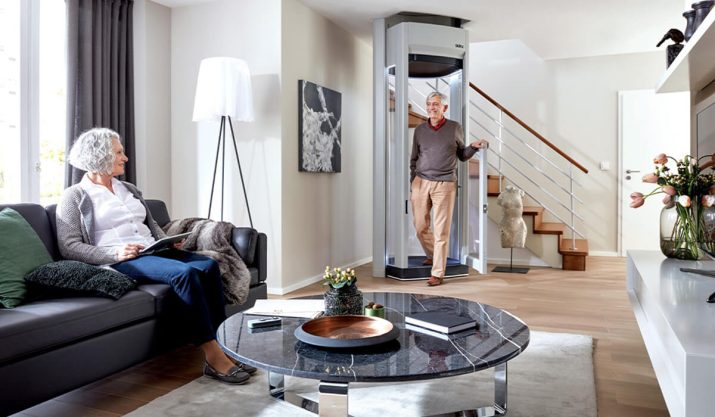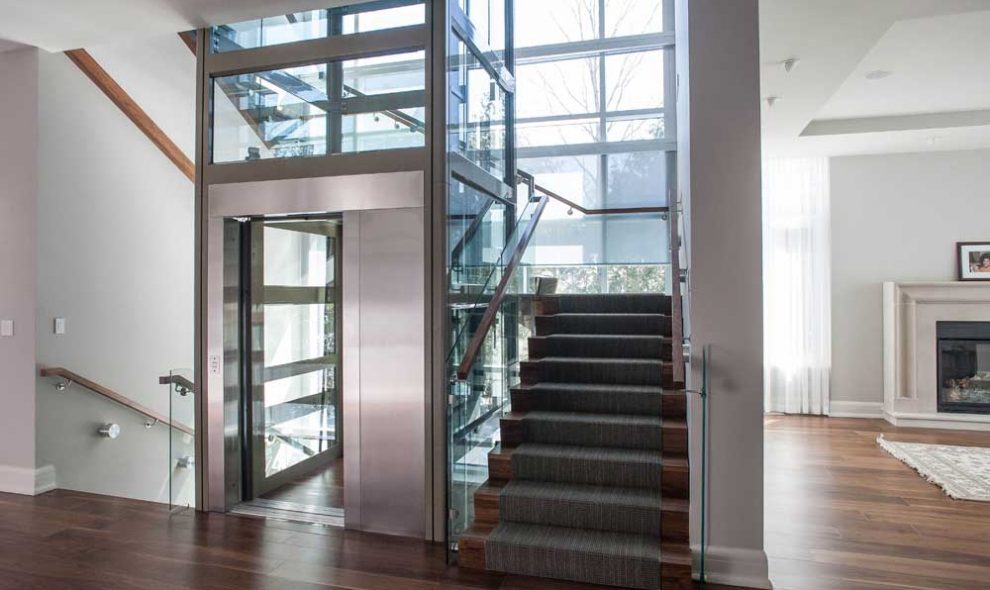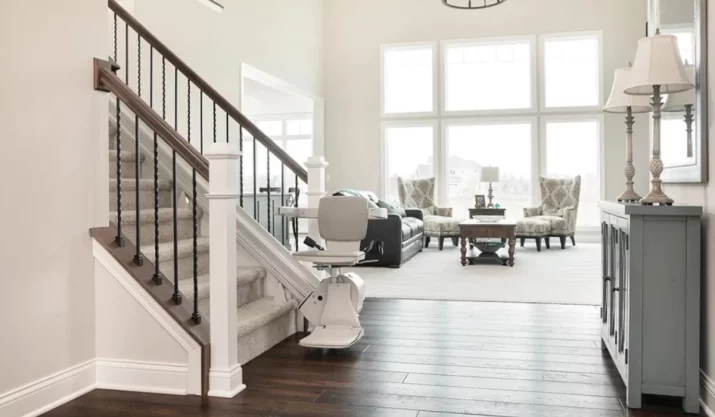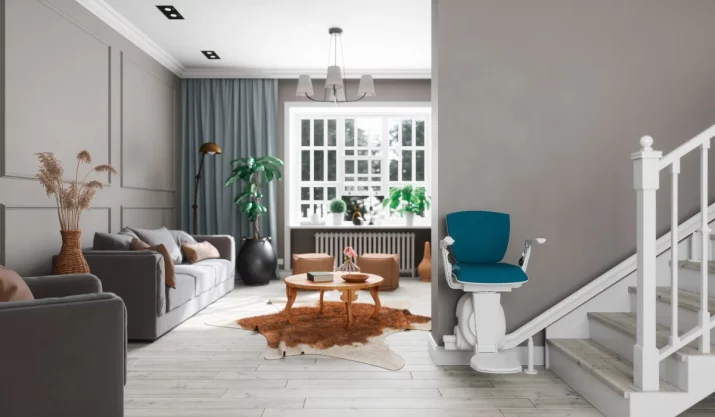Through-Floor Elevators: What Should I Know?

Table of Contents
Do you or someone you love struggle with going up and down stairs? If so, consider installing a through-floor elevator. A through-floor elevator is ideal for seniors and people with limited mobility, as it eliminates the need to climb stairs. It also helps to provide greater independence and ease of access, especially for people who require mobility devices.
In this article, we’ll discuss the features, cost, and special considerations of through-floor elevators.
Key Takeaways
- A through-floor elevator is an elevator type that goes through the floor rather than requiring a separate shaft to be constructed.
- Through-floor elevators are more affordable and convenient for many seniors than traditional ones.
- The average cost of a through-floor elevator is between $28,000 – $35,000.
What Is a Through-Floor Elevator?
Through-floor elevators, also called Shaftless elevators, go up and down through a large, cut-out hole in the floor. It is similar to a regular elevator but doesn’t require an entirely constructed elevator shaft to be created. This makes through-floor elevators more price friendly for seniors than traditional ones.
Why would you choose to install one?
You should consider installing a through-floor elevator if any of the following apply to you or a loved one:
- You have difficulty going up and down stairs;
- You live in a two-story home; or
- You have limited mobility.
By installing a through-floor elevator, you can stay in your home longer, avoid moving to a single-story residence, and maintain independence due to increased home accessibility. Plus, through-floor elevators can add resale value to your home. So if you’re considering selling your home in the future, a through-floor elevator could be a wise investment.
Through-Floor Elevator vs. Standard Home Elevator
Through-Floor Elevator

Through-floor elevators are more affordable than standard home elevators. You also don’t need to make structural changes to your home, as the elevator goes through a simple hole in your floor rather than requiring a separate shaft. This combination makes through-floor elevators an attractive option for seniors with a smaller budget.
Pros:
- Can provide easier access to both floors of a two-story building
- More affordable than standard home elevators
- Requires less construction than a standard home elevator
Cons:
- Cannot travel more than two floors
- May not fit all wheelchairs or other mobility devices
- More expensive than a stairlift
Standard Home Elevator

Traditional home elevators provide excellent up-and-down mobility in homes with three or more floors. These are ideal if you don’t mind making structural changes to your home and can afford the longer construction time. Because they require an elevator shaft to be constructed, standard home elevators tend to be more expensive than through-floor elevators. But they allow more design freedom and allow you to pick an aesthetic that matches your home perfectly.
Pros:
- Can travel more than two floors
- Able to transport a wheelchair or other mobility device
- More sturdy and reliable than through-floor elevators
Cons:
- More expensive than through-floor elevators
- Requires more construction than through-floor elevators
- May take longer to install than a through-floor elevator
How Much Does a Through-Floor Elevator Cost?
The cost of installing a through-floor elevator will vary depending on the type of elevator you choose, the size of your home, and other factors. On average, a through-floor elevator costs around $28,000 – $35,000. This does not include construction or accessories. Elevator costs increase significantly with traditional-style elevators compared to through-floor elevators.
If you’ve seen prices elsewhere on the internet, this might seem confusing since some websites claim the price can be as low as $1,500.
Keep a couple of things in mind for this price.
An elevator can mean different things. Someone may refer to a stair lift as an “elevator” and you can buy a used stair lift for $1,500. This will not include installation.
Think about what goes into the cost of a true in-home elevator like what you see in the pictures above.
- Materials Costs – These have to be the absolute best materials because someone’s life is at stake. Imagine if something went wrong. If you use cheap materials, the chances of something going wrong increase.
- Construction And Modification Costs – Do you want a team who has very little experience or without a stellar reputation to take your home apart and securely prepare it for your elevator? Probably not. This means you have to pay for highly experienced and skilled management and labor to plan and execute the construction. Great labor is not cheap.
- Installation Costs – The team modifying your home and the team installing the elevator are not the same. They require different skills and experience. But the same principles as construction and labor apply here. You want someone who has done this before…many times.
- Cost of Doing Business – Insurance, travel, taxes, etc. It all adds up, especially in California.
Important Considerations Before Purchasing a Through Elevator
Before installing a through-floor elevator, it is essential to consider how often it will be used. If the elevator is only occasionally used, purchasing a stair lift may be more cost-effective. Additionally, if you use a large mobility device, such as a wheelchair, ensure the through elevator is large enough to accommodate it. Some through elevators are only large enough to fit a single person, so it’s vital to double-check the size before you purchase one.
Finally, be sure to consult with a professional before installing a through-floor elevator. They can help you choose the right elevator for your needs and budget. And you can save yourself a lot of time and money by doing your homework before purchasing.
Questions Others Are Asking
Will Medicare pay for a home elevator?
Medicare does not cover home elevators because it classifies them as home modifications rather than Durable Medical Equipment (DME). Typically, if a device is helpful to people who do “not” have medical issues, such as with an elevator, Medicare will not cover it.
How much space is needed to install an elevator in a house?
A residential elevator needs roughly 20-25 square feet for construction. You may also need an 8-inch pit dug underneath.








